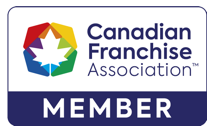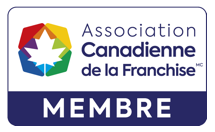I am often asked to explain what a “Tag-Along” (a.k.a. “Piggyback”) right is or what it means to be subject to a “Drag-Along” (a.k.a. “Co-Sale”) provision.
These provisions are most typically set out in a corporation’s shareholders’ agreement. I have seen them in a corporation’s articles, but that is a very rare place to put them.
The Drag-Along Right
Drag-Along rights come into play when a shareholder or shareholders receive an offer from an arm’s-length third party looking to purchase 100% of the issued and outstanding shares of a corporation. If the shareholders holding the number of votes prescribed by the Shareholders’ Agreement want to sell their shares, then a Drag-Along right allows those shareholders to force the corporation’s other shareholders (i.e. those who do not want to sell) to sell their shares to that same purchaser on the same terms as those who want to sell.
There are procedural rules regarding the giving of notice and time windows in which to make choices and ultimately conclude the sale, but these are less interesting than the fact that a Drag-Along right can be used to force another shareholder to sell their shares. It is a contractual obligation a shareholder must abide because they agreed to it. This shareholder could just as easily have been part of the approving shareholders who want to/need to trigger the Drag-Along right. Usually, the Shareholders’ Agreement includes provisions that authorize the Corporation to complete the sale as power of attorney holder for any minority shareholder who refuses to sell their shares if dragged, even though they contractually agreed to do so. This gives the purchaser a great deal of comfort knowing that he/she cannot be held at ransom by a reluctant shareholder.
The Tag-Along Right
By contrast, if any shareholder (usually it does not matter how many shares or what percentage of share ownership such shareholder has, though this variable can be used as a threshold trigger) wants to sell all or part of his/her shares to an arms’-length purchaser and such shareholder has received an offer he/she is willing to accept, then the corporation’s other shareholders can trigger the Tag-Along right to force the buyer to buy all or some of his/her shares as a condition precedent to buying the first shareholder’s shares. As a result, an opportunity for liquidity for one shareholder (which is a difficult thing to manage for private companies) becomes an opportunity for all of that corporation’s shareholders.
These can work in a couple of different ways. The two most common ways it seems to be done is to require the purchaser to buy the tagging-along shareholders’ shares, in addition to the initial selling shareholder’s shares, OR to require the purchaser to reduce the number of shares he/she buys from the initial selling shareholder proportionately in order to buy some of the shares of the shareholders who trigger their Tag-Along rights.
In the first circumstance, the purchaser ends up buying more shares than he/she initially wanted to buy, whereas, in the second circumstance, the purchaser buys the number or percentage of shares they wanted to buy by purchasing a pro rated portion of each participating shareholder’s holdings.
For example, assume a corporation has four shareholders owning shares in the following proportions:
Ron: 30%
Sally: 30%
Trevor: 30%
Una: 10%
If a purchaser’s initial offer sought to purchase all of Ron’s shares, and if both Sally and Trevor trigger their Tag-Along rights, then the purchaser is required to buy 90% of the corporation’s shares, which can have a chilling effect on the purchaser’s decision to actually close the transaction (i.e. they only wanted 30%, not 90% – at three times the cost).
Alternatively, in the second circumstance, if the purchaser offers Ron to buy 30% of the corporation’s shares (as opposed to all of Ron’s shares) and the same two shareholders trigger their Tag-Along rights, then the purchaser will buy 30% of the corporation’s shares from each of the three participating shareholders, after which it will only acquire 30% of the corporation’s shares. This is compared to the 90% in the first situation.
In the first case, the corporation is left with two shareholders: the purchaser with 90% of the shares and Una with 10% of the shares. In the second case, the corporation ends up with five, instead of four, shareholders, the purchaser with 30%, Una with 10% and each of Ron, Sally and Trevor with 20%.
If you have questions about shareholders’ agreements, or specific provisions within them, or to benefit from the superior business law knowledge that Mills & Mills LLP offers, contact us at 416-863-0125 or send us an email.

 2 St Clair Ave West
2 St Clair Ave West


